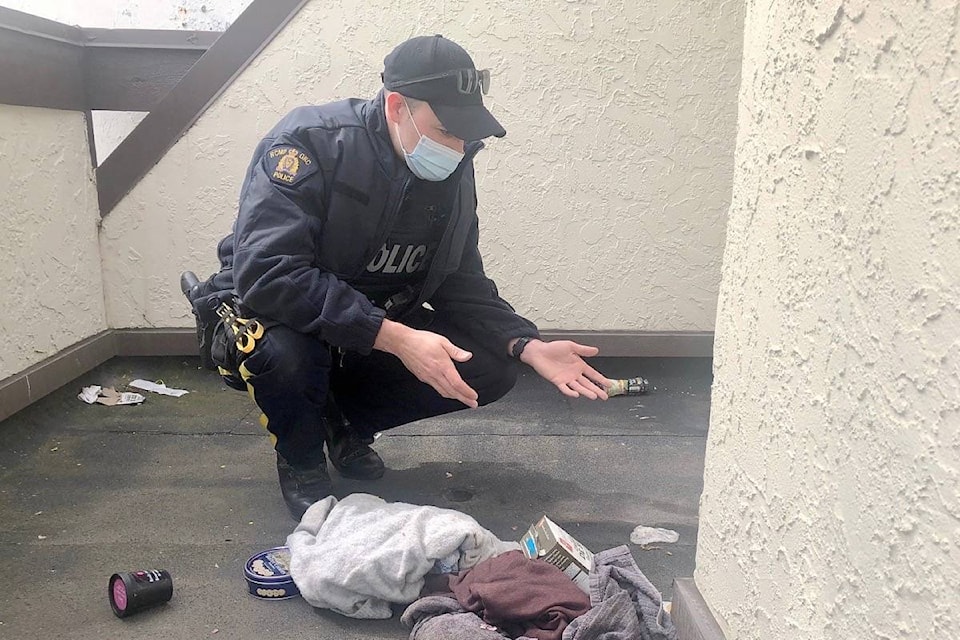A recent homelessness count in White Rock identified 24 “unsheltered” individuals in the city, the majority of whom were Caucasian males.
According to a report released by White Rock RCMP Staff Sgt. Kale Pauls Wednesday (May 5), the count – conducted on April 16 and 17 – also concluded that most (18) of the two dozen were more connected to Surrey than the waterfront city itself.
The count captured “point-in-time” information, and did not include individuals living in shelters, transition houses, safe houses or temporarily in other people’s homes.
It was prompted “by our desire to have factual information to share with others that are seeking solutions to advance the voice of this marginalized population,” Pauls told Peace Arch News Thursday.
“Police are not the lead on the homelessness issue, but by virtue of the nearly daily calls we receive and the de facto homelessness outreach work the officers do, we are well versed in the issue,” he added.
Of the 24 individuals identified in the count, just four were located during patrols conducted over the two days in area bushes, parks and alleys and around condos, vacant buildings, parkades and businesses. The rest were identified through canvassing the city’s officers regarding their encounters with homeless individuals over the last two months.
Other findings include:
• 66 per cent (16) of those identified were male;
• 92 per cent were Caucasian;
• 25 per cent had a familial history in White Rock or were previously housed in the city;
• many identified White Rock as being the area south of 24 Avenue;
• the attraction to White Rock included the calm atmosphere, the proximity to the ocean and the availability of outdoor electrical outlets;
• for many, fentanyl or methamphetamine has been a predominant factor in becoming or remaining unsheltered;
• some would not take substance-use treatment if offered, others felt that there was not immediate access to treatment when they were at the point of accepting it;
READ MORE: Bill Fraser Health for excessive mental-health-related police time at White Rock hospital: top cop
• 29 per cent (7) of the individuals had mental-health challenges that the officers believed were so acute that reasonable dialogue was difficult; and,
• approximately one third of the individuals avoided shelters due to conflict with other people, or they found it challenging to stay in a structured environment.
A summary of the count notes that White Rock officers “continue to provide a compassionate service to this marginalized population within the community.”
“Our ongoing participation and communication on this subject, to government and other agencies, is aimed at advancing this complex issue,” the report adds.
‘Vulnerable persons’ was one of five priority areas identified for increased focus in the detachment’s 2020-2023 strategic plan.
“Continuous professional development and constant adaptation of procedures are required to ensure that best practices are being followed, and that police maintain awareness of the lived experiences of marginalized and victimized people,” the report states.
tholmes@peacearchnews.com
Like us on Facebook and follow us on Twitter
